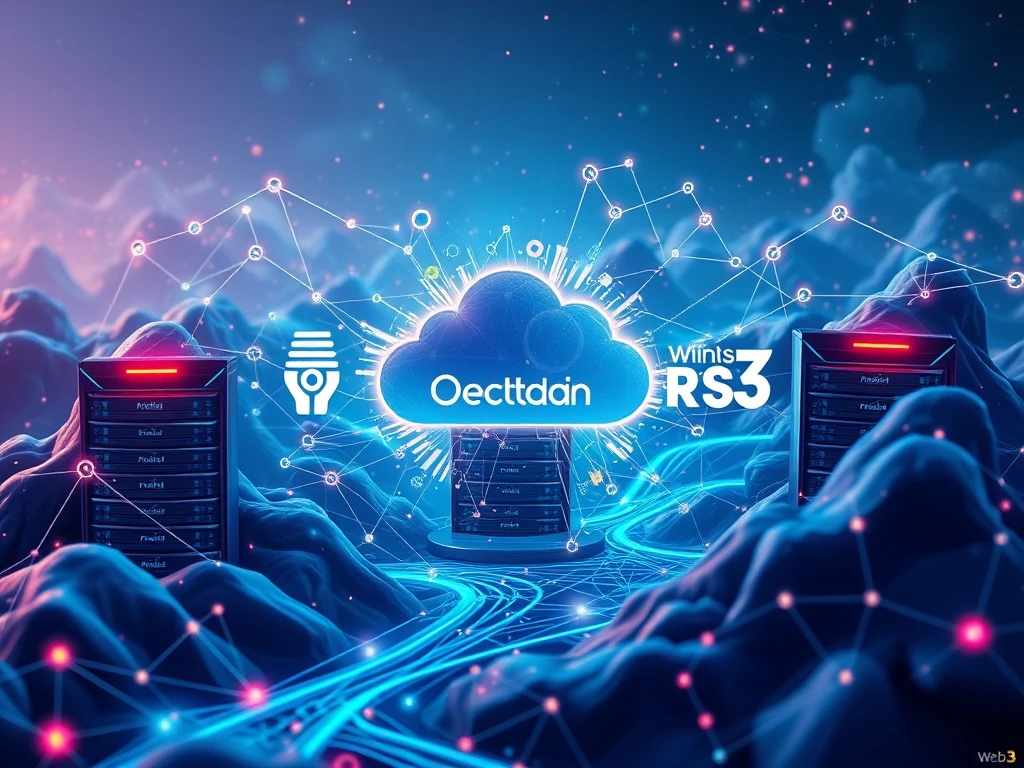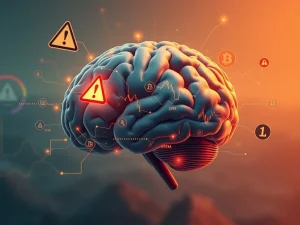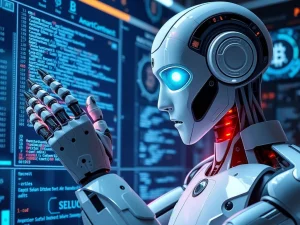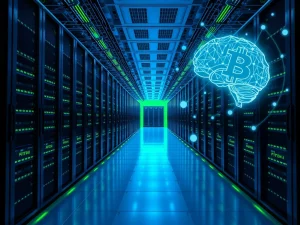Oraichain, Pinlink, RSS3: Pioneering Decentralized AI to Shatter Cloud Barriers

Are you ready to witness a monumental shift in the digital economy? The centralized grip on artificial intelligence, high-performance computing, and data access has long created significant barriers, stifling innovation and limiting global participation. But a powerful trio – Oraichain, Pinlink, and RSS3 – is stepping up to dismantle these obstacles, promising a truly level playing field for the emerging Web3 landscape. This isn’t just about incremental improvements; it’s a fundamental redefinition of how we build, share, and utilize digital resources, driven by the core tenets of decentralization.
Oraichain: Democratizing Decentralized AI Development
At the forefront of this revolution is Oraichain, an AI Layer 1 blockchain and AI Marketplace designed to make artificial intelligence accessible to everyone. Traditionally, creating and deploying AI models demands deep technical expertise and substantial financial investment, placing it out of reach for many developers, especially those in emerging economies.
Oraichain changes this narrative by:
- Streamlining AI Model Creation: Developers can leverage pre-built, verifiable tools within the AI Marketplace. This means you don’t need to be a machine learning expert to integrate advanced AI into your decentralized applications (DApps).
- Reducing Financial Burdens: By providing a decentralized infrastructure, Oraichain significantly cuts down the costs associated with traditional AI development and deployment.
- Ensuring Trustworthiness: The platform emphasizes verifiable AI, mitigating risks linked to opaque AI systems and fostering a transparent environment.
This approach democratizes access to AI-driven innovation, allowing creators worldwide to contribute to a vibrant ecosystem. Imagine a future where a brilliant mind in any corner of the globe can build sophisticated AI solutions without being hindered by prohibitive costs or lack of specialized knowledge. This is the promise of Decentralized AI that Oraichain delivers.
Pinlink: Empowering Global Access to High-Performance Computing
The journey towards a decentralized digital economy isn’t just about AI; it’s also about the underlying infrastructure. High-performance computing (HPC) resources, often critical for AI training, data processing, and complex simulations, are typically locked behind expensive cloud services controlled by a few tech giants. This creates a massive hurdle for developers and researchers, particularly in regions where such services are prohibitively expensive. Enter Pinlink.
Pinlink addresses this challenge head-on by offering a decentralized marketplace for high-performance hardware. Here’s how it levels the playing field:
- Cost-Effective Alternative: For those in emerging markets, Pinlink provides a much-needed affordable alternative to traditional cloud computing, transforming underutilized computing resources into accessible assets.
- Fractional Tokenization of RWAs: Pinlink introduces fractional tokenization of real-world assets (RWA), enabling individuals with limited capital to invest in hardware and generate yields. This innovative model transforms idle computing power into liquid assets, creating new economic opportunities.
- Challenging Centralized Dominance: By decentralizing hardware investment, Pinlink directly challenges the dominance of traditional cloud operators and reduces reliance on centralized infrastructure.
This initiative not only lowers the barrier to entry for computational power but also creates a more inclusive digital economy, ensuring that resource limitations don’t stifle innovation in the broader Web3 space.
RSS3: Unlocking the Open Information Layer for Web3
Data is the lifeblood of the digital age, and its accessibility is paramount for true innovation. In the centralized web, valuable datasets are often walled off, controlled by corporations, or hidden behind paywalls. This scarcity of structured, open data severely stifles development and perpetuates monopolies over information. This is where RSS3 steps in.
RSS3’s Open Information Layer is designed to make structured data freely accessible to developers worldwide. It operates by:
- Aggregating and Distributing Data: RSS3 collects and organizes structured data from the Open Web, making it readily available for various applications.
- Empowering Creators: Developers can leverage this open data to build a wide range of applications, from sophisticated Decentralized AI models to localized news systems and cutting-edge dApps.
- Eliminating Corporate Monopolies: By removing paywall barriers and centralized control, RSS3 ensures that data—the foundational resource for digital innovation—is available to all.
This open-access framework accelerates the development of applications that rely on diverse datasets, fostering a more equitable and dynamic innovation landscape. It’s a critical component for building a truly open and accessible Web3.
The Synergy: How Oraichain, Pinlink, and RSS3 Forge a Level Web3 Playing Field
The individual contributions of Oraichain, Pinlink, and RSS3 are significant, but their combined efforts create a powerful synergy that fundamentally reshapes the digital economy. They address interlinked challenges—AI complexity, hardware affordability, and data accessibility—forming a robust ecosystem that enables a broader range of participants to engage with cutting-edge technologies.
Consider the interconnected benefits:
| Platform | Problem Solved | Contribution to Web3 | Impact on Innovation |
|---|---|---|---|
| Oraichain | AI development complexity & cost | Democratizes Decentralized AI creation | Broader participation in AI-driven dApps |
| Pinlink | High cloud computing costs & hardware access | Provides affordable, decentralized HPC infrastructure | Enables resource-intensive applications for all |
| RSS3 | Centralized, inaccessible data | Offers open, structured information layer | Fuels data-hungry AI and dApp development |
This integrated approach aligns perfectly with the broader Web3 vision of decentralization, where participation is determined by talent and creativity rather than geographic or financial advantages. As AInvest notes, such platforms enhance liquidity for asset owners while simultaneously reducing computational costs for developers, creating mutual benefits for all stakeholders. This dual advantage underscores the immense potential of decentralized systems to bridge gaps between resource-rich and resource-constrained actors, fostering a more inclusive digital economy.
Navigating the Future: Challenges and Opportunities for Decentralized AI and Web3
While the vision is compelling, the journey for Oraichain, Pinlink, and RSS3, like all pioneering Web3 projects, will involve navigating certain challenges. Key among these are:
- Regulatory Compliance: The evolving global regulatory landscape for blockchain and decentralized technologies will require careful adaptation and adherence.
- Technological Interoperability: Ensuring seamless communication and data exchange between various decentralized protocols and traditional systems remains a complex but crucial task.
- Scalability and Adoption: As these platforms grow, their ability to scale efficiently and attract a massive user base will be critical for widespread impact.
However, their current focus on tangible operational milestones—rather than speculative forecasts—demonstrates a strong commitment to real progress. By prioritizing accessibility, security, and practical utility, these projects are not just building technology; they are laying the groundwork for a decentralized future where innovation is truly limitless, unconstrained by traditional barriers.
Conclusion: A New Era of Accessibility and Innovation
The combined efforts of Oraichain, Pinlink, and RSS3 represent a significant leap forward in realizing the promise of Web3. By systematically dismantling the barriers in AI development, high-performance computing, and data access, they are not only fostering innovation but also creating a more equitable digital economy. This powerful alliance is ensuring that talent and creativity, rather than financial or geographical advantages, become the true drivers of progress. As these platforms continue to evolve, they are paving the way for a future where decentralized solutions empower a global community to participate, build, and thrive in the digital landscape. The era of truly open and accessible innovation is here, championed by this pioneering trio.
Frequently Asked Questions (FAQs)
Q1: What problem do Oraichain, Pinlink, and RSS3 collectively solve?
They collectively address the significant barriers in the digital economy related to AI development complexity, high costs of high-performance computing, and the monopolization or inaccessibility of structured data. By offering decentralized solutions, they aim to level the playing field for global participation in Web3.
Q2: How does Oraichain democratize AI development?
Oraichain democratizes AI development through its AI Layer 1 blockchain and AI Marketplace. It provides pre-built, verifiable tools that reduce the technical and financial burdens of creating and deploying AI models, allowing developers without deep machine learning expertise to integrate advanced AI into decentralized applications (DApps).
Q3: What is Pinlink’s unique contribution to the Web3 ecosystem?
Pinlink offers a decentralized marketplace for high-performance hardware. Its unique contribution lies in providing a cost-effective alternative to expensive cloud computing services, especially for emerging markets. It also uses fractional tokenization of real-world assets (RWA) to enable broader investment and yield generation from underutilized computing resources.
Q4: How does RSS3 ensure open data access for developers?
RSS3’s Open Information Layer aggregates and distributes structured data from the Open Web, making it freely accessible to developers. This open-access framework eliminates corporate monopolies and paywalls over valuable datasets, empowering creators to build diverse applications from AI models to local news systems.
Q5: What are the primary benefits of these platforms working together?
The primary benefits include a more inclusive and equitable digital economy where participation is based on talent and creativity, not financial or geographical advantages. Their synergy reduces computational costs for developers, enhances liquidity for asset owners, and accelerates innovation by providing accessible AI tools, affordable computing power, and open data.









